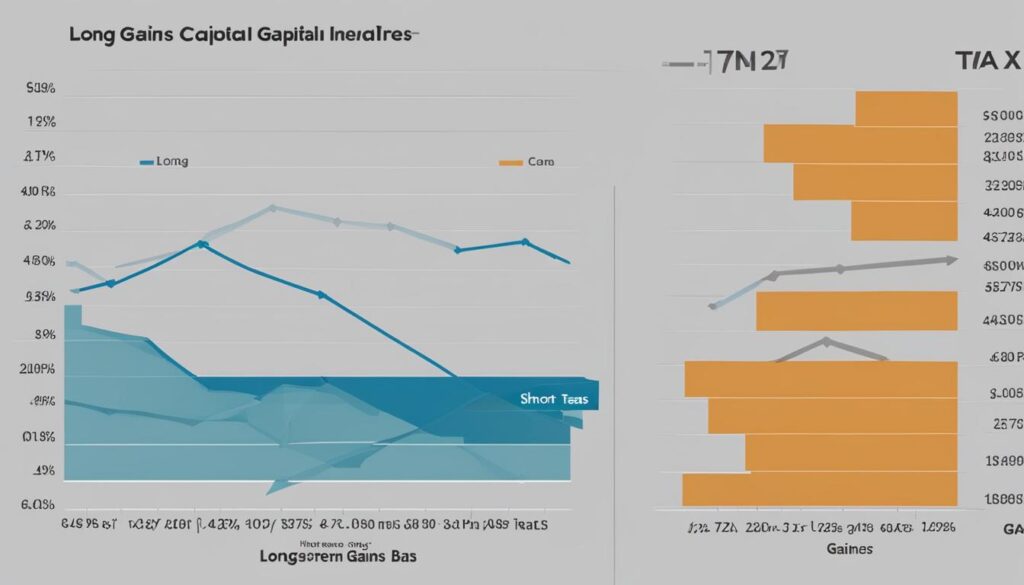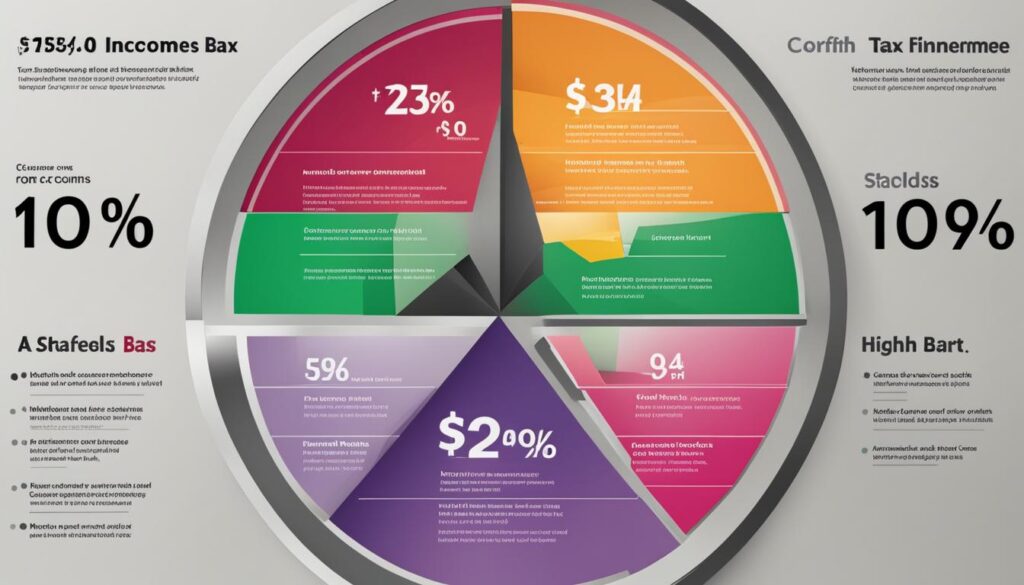In the world of stock investing, preserving profits is just as important as generating them. This is especially true when you consider how taxes take a significant bite out of your earnings and impede your wealth-building efforts. Fortunately, expert financial planning and tax avoidance strategies can be used to legally mitigate the taxes levied on your stock gains. With the right tools, knowledge, and foresight, it is possible to make informed decisions that align with your goals and pay fewer taxes on your stock investments.
From understanding the nuances of capital gains taxes to making tax-efficient investments in brokerage accounts and retirement plans, savvy stock investors have a myriad of ways to minimize their tax liabilities. In this article, we’ll explore various tax-saving methods, crucial tips for stock investment tax advice, and the benefits of working with professional financial advisors. By understanding these strategies and putting them into practice, you might find yourself paying less to Uncle Sam and keeping more of your hard-earned profits.
Understanding Capital Gains Taxes on Stocks
Capital gains taxes on stocks are an essential aspect of investment tax implications, which investors must be familiar with to optimize their stock portfolio management. These taxes apply to the profit made from selling stocks and they vary based on the holding period of the investments.
Short-term capital gains tax is levied on assets held for a year or less, and they are taxed at the investor’s regular income tax rates. On the other hand, long-term capital gains tax is applicable for assets held longer than one year and benefit from reduced tax rates, potentially as low as 0% for certain income levels.
Another essential factor to consider when dealing with investment tax implications is dividends. Dividends received from stocks are usually taxable and should be factored into an investor’s overall tax planning. It is imperative to keep track of not only the gains obtained from selling stocks but also any dividends received, which may be taxed differently.
Investing in taxable brokerage accounts is popular among investors as it allows for ease of access and flexibility. However, these accounts are not tax-deferred like some retirement accounts, making their growth subject to taxes. Capital gains and dividend taxes will apply to investments held in these taxable brokerage accounts. Being aware of the tax implications when using both taxable and tax-deferred accounts enables investors to make informed decisions and optimize their investment strategies.
In summary, understanding capital gains taxes on stocks and factoring them into one’s investment strategy can help ensure proper long-term tax planning. This includes comprehension of how holding periods affect tax rates and the importance of considering taxable brokerage accounts when managing one’s investments. Keeping well-informed on investment tax implications allows investors to make better decisions for their portfolio and potentially maximize returns while minimizing their tax liability.
The Importance of Holding Periods: Short-term vs Long-term Capital Gains

Understanding the impact of holding periods on capital gains taxes is crucial for investors looking to optimize their tax liabilities. Holding periods determine whether an investment qualifies for short-term or long-term capital gains tax treatment, which can significantly affect an investor’s tax burden.
Effects of Holding Periods on Tax Rates
Short-term capital gains are realized when stocks are held for one year or less before being sold. These gains are subject to taxation at the investor’s ordinary income tax rates. On the other hand, long-term capital gains are realized when stocks are held for more than one year before being sold. These gains benefit from lower tax rates, with a maximum rate of 20%. Some investors, depending on their taxable income, may even qualify for a 0% long-term capital gains tax rate.
Strategic Timing of Stock Sales
Investors can minimize capital gains taxes by strategically timing their stock sales. Holding stocks for over a year allows investors to take advantage of the lower long-term capital gains tax rates. In addition, selling assets in a year with lower income or offsetting gains with capital losses can be an effective strategy for reducing overall tax liability.
By focusing on the strategic disposal of stocks and understanding the impact of holding periods on capital gains taxes, investors can minimize their tax burden and maximize the value of their investments.
Tax-Efficient Investing in Stocks Through Retirement Accounts

One effective approach to minimize taxes on stock gains is by investing through retirement accounts. These accounts, such as Traditional IRAs, 401(k)s, Roth IRAs, and Roth 401(k)s, offer tax-efficient investing benefits that help investors grow and preserve their wealth.
Traditional IRAs and 401(k)s provide a tax-deferral benefit to investors. Funds contributed to these accounts may reduce taxable income, allowing investments to grow tax-free until they are withdrawn in retirement. Withdrawals during retirement are taxed at the investor’s ordinary income tax rate.
In contrast, Roth IRAs and Roth 401(k)s offer tax-free growth and withdrawals, as long as certain conditions are met. These conditions typically involve the account being open for at least five years and the investor being 59½ years old when making the withdrawals. This method effectively shields investors from capital gains taxes on stock investments within these accounts.
Contributing to these retirement accounts not only aids in securing a comfortable retirement, but also strategically minimizes capital gains taxes. By allocating stock investments within these tax-advantaged accounts, investors are better positioned to keep more of their hard-earned wealth and maintain their financial goals.

When selling stocks, a tax-saving approach that investors can employ is the specific identification of shares method. This process allows investors to choose the particular shares they would like to sell, potentially minimizing capital gains taxes. By selecting shares with a higher cost basis or those that have incurred losses, investors can reduce the taxable gain or even realize a tax-deductible loss while maintaining overall profitable positions.
Specific identification of shares is particularly beneficial to investors who have acquired stocks in a company at various times and prices. Implementing this method might require more meticulous record-keeping, but it can lead to significant tax savings when executed strategically.
For instance, suppose an investor holds shares of Company A purchased at different times, resulting in varying costs. If the investor needs to sell some of these shares, selling the ones with the highest cost basis will result in a smaller capital gain. This approach reduces the capital gains tax liability, leaving more money in the investor’s pocket.
However, it is essential for investors to communicate their share selection intentions to their brokers. If they fail to do so, the default method for selling stocks (FIFO, or First-In, First-Out) may be applied – which could potentially lead to higher capital gains taxes.
In conclusion, using the specific identification of shares method, coupled with careful planning and record-keeping, can be an effective tax-saving and selective stock selling strategy for investors seeking to minimize their capital gains tax liability while maximizing their overall profits.
Income Level Optimization for Reduced Capital Gains Taxes

Investors can strategically manage their income levels to take advantage of reduced capital gains tax rates, which are particularly beneficial for those with long-term capital gains. By optimizing income, investors can potentially fall within tax-free thresholds, further minimizing their tax burden.
Utilizing Tax-Free Thresholds
There are specific income thresholds where the tax rate on long-term capital gains drops to 0% in the United States. For investors with taxable income levels that fall below these thresholds, it’s possible to realize long-term capital gains without incurring any capital gains tax. Investors can strategically plan their withdrawals or realize gains in years with lower income levels to take advantage of these tax-free thresholds.
Tax Planning with Deductions and Deferrals
Another effective strategy for reducing taxable income and potentially benefiting from lower or even zero capital gains tax rates is through deductions and deferrals. There are various ways to lower one’s taxable income and subsequently qualifying for lower long-term capital gains tax rates:
- Claiming deductions for various expenses, such as property taxes and charitable contributions
- Maximizing contributions to tax-deferred retirement accounts such as Traditional IRAs and 401(k)s
- Contributing to Health Savings Accounts (HSAs), which have additional tax advantages
By implementing these income optimization strategies, investors can take advantage of lower tax brackets to reduce their capital gains taxes, helping them keep more of their hard-earned profits.
Capital Loss Harvesting: A Method to Counterbalance Gains

One effective way to manage the tax implications of stock investments is through capital loss harvesting. This strategy revolves around recognizing investment losses to tax offset capital gains and potentially reduce overall tax liability. By selling underperforming investments, investors can create a deductible loss. Such losses can be strategically applied to counterbalance capital gains and up to $3,000 of ordinary income annually.
In cases where realized losses surpass gains, these excess losses can be carried forward to future years for continued tax management. This ensures that capital loss harvesting remains a valuable tool even if there are no immediate gains to offset. Moreover, investors should take note of the “wash sale rules” which disallow claiming a loss on a security sold and repurchased within 30 days.
Capital loss harvesting can be particularly advantageous when faced with market downturns. Turning market losses into tax savings by rebalancing a portfolio not only promotes greater tax efficiency but also aligns the investment pool with long-term goals. Seasoned investors often view market declines as opportunities to evaluate their holdings and make strategic tax decisions.
Keeping a close eye on underperforming stocks and consistently employing capital loss harvesting techniques can be a proactive approach to managing taxes on investment gains. By understanding the potential benefits of this strategy and employing it wisely, investors can effectively reduce taxation on their stock investments both in the short and long term.
Residency Strategies: Taking Advantage of State Tax Policies

When it comes to capital gains tax avoidance, one oft-overlooked strategy is to consider the impact of state tax policies on investments. Surprisingly, certain states in the United States do not impose capital gains taxes, providing an opportunity for stock investors to reduce their overall tax burden by changing their residency.
By strategically selecting a state with favorable tax policies for their investment and residency needs, investors can potentially minimize taxes on stock gains. This involves researching state tax policies and making informed decisions about where to establish residency.
States such as Florida, Texas, Nevada, and Washington are well-known for having no state income tax, which includes no taxes on capital gains. Therefore, relocating to one of these tax-friendly states can offer a potential advantage in terms of residency strategies.
However, it is essential to keep in mind that the process of changing residency might involve various legal and logistical challenges. Investors should take the time to understand the respective requirements for establishing residency in the state of their choice and integrate this information into their overall financial and tax planning strategy.
With careful consideration and planning, residency strategies can serve as a legitimate and potentially advantageous method of capital gains tax avoidance, allowing investors to retain more of their stock gains and ensure that their investment decisions are tailored to their unique financial objectives.
Charitable Contributions of Stock: A Double Benefit

One tax-saving strategy that stock investors can use is making charitable contributions of appreciated stock. This approach involves donating high-valued stock directly to a charity, providing significant tax benefits.
By donating appreciated stock to a charity, an investor can obtain a tax deduction for the full market value of the stock, thereby reducing their taxable income. Furthermore, the investor avoids capital gains taxes that would have been payable had they sold the stock themselves and donated the proceeds. The result is a dual benefit: the donor receives a valuable tax deduction while avoiding capital gains taxes.
Moreover, charities typically do not have a tax obligation on the receipt of donated stock. As a consequence, the charitable organization can sell the stock and receive the full value, unburdened by taxes. It’s a win-win situation for both parties, where the donor effectively minimizes their tax liability, and the charity receives a generous, tax-free contribution.
To maximize the benefits of charitable contributions of stock, investors should ensure that the stocks being donated have been held for more than one year. Donating stocks that have been held for a shorter time frame might result in reduced tax deductions. Consult a financial advisor or tax professional to ensure that the donation strategy employed provides the most significant possible tax savings.
Tax-Saving Opportunities within Opportunity Zones

The Tax Cuts and Jobs Act introduced the concept of opportunity zones, designed to incentivize investment in low-income and distressed communities. By offering various tax benefits, these zones have become an attractive option for investors looking to defer or reduce their capital gains taxes. This innovative approach to fostering economic growth and development allows investors to positively impact communities in need while taking advantage of significant tax-saving opportunities.
One of the main benefits of investment in opportunity zones is the potential for tax deferral. Investors can temporarily defer capital gains on unrealized gains by redirecting those funds into a qualified opportunity fund (QOF). The tax deferral period typically lasts until the investment is sold or until December 31, 2026, whichever comes first. Furthermore, depending on the duration of the investment, a portion of the initial capital gains might be permanently excluded.
If the QOF investment is maintained for at least five years, the investor will receive a 10% reduction in the initially deferred capital gains, while a seven-year holding period results in an additional 5% reduction, amounting to a total of 15%. Moreover, an investment period of at least ten years can lead to a complete exclusion of capital gains taxes on any appreciation of the QOF investment. This long-term benefit allows investors to maximize the tax-saving potential within opportunity zones while contributing to the revitalization of struggling communities.
Successful investment in low-income communities through opportunity zones requires careful research and planning, as only certain projects and geographical areas are eligible for these tax-saving benefits. It is crucial for investors to ensure their investment plans align with the specific regulations and requirements of the program. Nevertheless, for those willing to commit to long-term investments that support underserved communities, opportunity zones can provide considerable tax advantages along with potential positive social impact.
Inheriting Stocks: The Step-Up Basis Advantage

One notable tax advantage related to inheriting stocks is the application of the step-up basis, which can play a significant role in avoiding capital gains taxes on inheritance. When an individual inherits stocks, the cost basis of those stocks is adjusted to the fair market value at the time of the original owner’s death. This adjustment often eliminates the capital gains taxes on the appreciation that accumulated during the original owner’s lifetime.
If the inherited stocks continue to appreciate in value after the date of death, the heir would only owe taxes on the gains realized after that date. This benefit allows the beneficiary to sell the inherited stocks at potentially lower capital gains taxes compared to what the original owner would have paid if they sold the stocks during their lifetime. The step-up basis advantage is a crucial financial planning strategy for heirs and beneficiaries, helping them minimize capital gains taxes on inherited assets.
Consulting a Financial Advisor: Tailoring Your Tax Strategy

When it comes to navigating the complex world of stock tax planning, seeking the guidance of a qualified financial advisor can prove to be invaluable. These professionals can provide tailored tax strategy consulting services, helping investors develop personalized plans that maximize their tax efficiency and align with their unique financial goals.
Financial advisors possess in-depth knowledge of capital gains tax reduction strategies and can help individuals make informed decisions about the best approaches for their specific situations. They can advise on holding periods, retirement account contributions, capital loss harvesting, and other tactics that can assist in minimizing taxes on stock gains.
Beyond providing expert advice on stock tax planning, financial advisors also ensure that an investor’s tax strategy remains cohesive with their overall financial plan. This holistic approach encompasses income, asset allocation, risk tolerance, and long-term financial objectives, helping investors make the most of tax-saving opportunities while staying on track toward their goals.
In summary, consulting a financial advisor can greatly benefit investors by offering tailored tax strategies that not only minimize the taxes paid on stock gains but also align with their broader financial aspirations. By leveraging the expertise of a financial advisor, individuals can navigate the complex world of stock tax planning and maximize their investment outcomes.
Investment Calculators: Estimating Future Tax Liabilities

Investment calculators are powerful tools that can aid investors in estimating future tax liabilities and facilitating proactive tax planning. These calculators can forecast potential tax impacts on various investment scenarios, helping investors optimally plan and make informed decisions to minimize their future tax burden on stock gains.
By inputting data such as the initial investment amount, expected rate of return, holding period, and the investor’s tax bracket, investment calculators can provide valuable insights into the impact of taxes on investment growth. Investors can use these projections to compare different investment options, strategically sell stocks, and determine the most tax-efficient strategy for their unique financial goals.
Capital gains estimation is another essential component of investment calculators. When forecasting future tax liabilities, investors need to consider the tax implications of both short-term and long-term capital gains. A well-designed calculator can help users understand the consequences of their investment decisions and to develop personalized tax strategies that align with their investment goals.
In conclusion, investment calculators can significantly benefit investors by helping them estimate future tax liabilities related to their stock investments. By accurately forecasting the tax impact of various investment scenarios, these calculators enable investors to effectively strategize and implement tax-efficient practices that ultimately result in minimized tax burden on their stock gains.
Long-term Planning to Align with Tax Reduction Methods

Long-term planning plays a crucial role in minimizing the tax impact on stocks and optimizing investment returns. By understanding how life events and changes in income can affect stock taxation, you can make informed decisions about when and how to sell stocks to achieve tax-efficient results. Integrating stock investments into a comprehensive financial plan ensures that all aspects, including income, retirement goals, and tax implications, are considered, allowing for a holistic approach to investing in stocks and effective utilization of tax-saving strategies.
How Life Events Impact Stock Taxation
Significant life events such as retirement, inheritance, or changes in income can have a substantial impact on the tax treatment of your stock portfolio. For example, if you retire or experience a decrease in income, you may want to consider selling stocks to take advantage of lower capital gains tax rates. Conversely, in a year with unusually high income, you may want to postpone stock sales to avoid being pushed into a higher tax bracket. Proactively planning for these events can help you strategically sell stocks to minimize capital gains taxes over the long term.
Integrating Stocks into a Comprehensive Financial Plan
Incorporating stock investments into a comprehensive financial plan enables you to consider all factors affecting your financial wellbeing, including income, expenses, retirement goals, and tax implications. Assessing your stock portfolio in the context of your overall financial objectives allows you to make more informed decisions, optimize tax savings, and ensure long-term, tax-advantaged growth. A comprehensive financial plan also provides the opportunity to review your holdings regularly and make adjustments accordingly to align your investment strategy with your tax reduction goals.
Frequently Asked Questions
How do holding periods affect capital gains tax rates on stocks?
Holding periods play a significant role in determining capital gains tax rates. Short-term capital gains, applicable to stocks held for one year or less, are taxed at the investor’s regular income tax rates. In contrast, long-term capital gains, applicable to stocks held longer than a year, are taxed at lower rates, with some investors potentially qualifying for a 0% rate based on their taxable income.
Can investing in retirement accounts help minimize taxes on stock gains?
Yes, investing in retirement accounts such as Traditional IRAs, Roth IRAs, and 401(k)s can defer or eliminate capital gains taxes on stocks. Contributions to Traditional IRAs and 401(k)s may also reduce your taxable income, while Roth IRAs and Roth 401(k)s offer tax-free growth and withdrawals, provided certain conditions are met.
Specific identification of shares is a method used by investors to choose which shares to sell, potentially minimizing capital gains taxes. By selecting shares with a higher cost basis or those that have incurred losses, investors can reduce the taxable gain or even realize a tax-deductible loss while maintaining overall profitable positions.
How can charitable contributions of stock reduce taxes on stock gains?
Donating appreciated stock directly to a charity can provide a tax deduction for the full market value of the stock without incurring capital gains taxes. This strategy is mutually beneficial as the donor avoids taxes on the gain, and the charity receives the full value of the stock, typically without a tax obligation.
What are opportunity zones, and how can they offer tax-saving opportunities for stock investors?
Opportunity zones are designated low-income and distressed communities that offer tax benefits for investors. By reinvesting unrealized gains into qualified opportunity funds and maintaining the investment for at least ten years, investors can potentially avoid capital gains taxes on those investments.
How does the step-up basis advantage work for inheriting stocks?
Inherited stocks receive a step-up in basis to the fair market value as of the date of the original owner’s death, often eliminating capital gains taxes on the appreciation that occurred during the original owner’s lifetime. Should the stocks appreciate further after inheritance, taxes would only be due on the gains realized after the date of death.
Consulting a financial advisor allows investors to tailor tax strategies to their unique financial situations, potentially maximizing tax efficiency when selling stocks. Financial advisors can provide expert advice on capital gains tax reduction and assist with strategic planning, ensuring that decisions align with overall financial goals.
The Bottom Line: Making the Most of Your Investment and Taxes
When it comes to tax planning strategies for stocks, it’s crucial for investors to understand the various stock tax avoidance techniques and legal ways to minimize taxes on stocks. By employing tax-efficient investing practices and tax reduction methods for stock traders, investors can optimize their portfolios and keep more of their profits.
Some strategies to avoid paying taxes on stock gains include holding assets for longer periods, making use of retirement accounts, and being mindful of income levels. Additionally, there are tax-saving strategies for stock market investments, such as capital loss harvesting, charitable contributions of stock, and taking advantage of stock capital gains tax loopholes.
In conclusion, smart tax planning can make a significant difference in the success of your stock investments. By embracing tax-saving tips for stock investors and consistently updating your understanding of tax laws, you will be well-equipped to manage and maximize the growth of your investment portfolioץ






